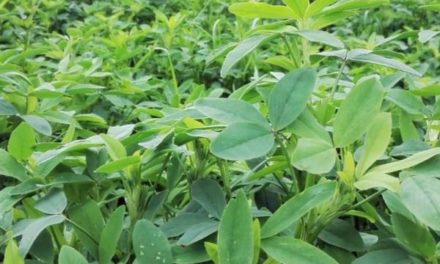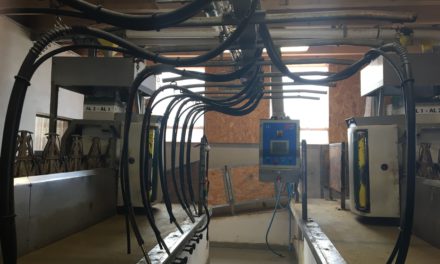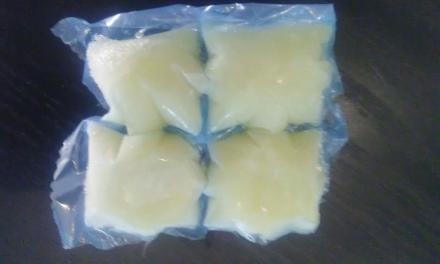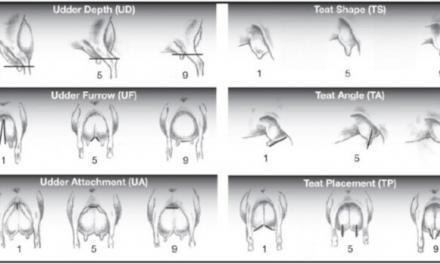This post is also available in:
![]()
![]()
![]()
![]()
Country: Spain
Dairy or/and meat sheep: Dairy and meat
Source of information: Bibliography; Technical Services
Level of solution: Knowledge/Practical
Aim: Ensure that new-born lambs consumes a sufficient amount of colostrum at the optimal time, and keep good quality colostrum to feed orphaned lambs, lambs born from very prolific litters or abandoned lambs.
Description:
- What is implemented;
To assess the amount of colostrum consumed by the lambs
- How is implemented;
On the first day of life, lambs have to consume an amount of colostrum equal to 10% of their live weight. It is recommended to distribute that daily amount in a maximum of 4 doses, the first during the first 3 h of life, and then at around 8, 14 and 20 h.
Whenever the mother does not have enough colostrum, high quality colostrum should be collected from multiparous sheep after having fed their offspring. Sheep must be in a good condition, suitably fed, and vaccinated against the more frequent diseases within the flock or the geographical area.
Milk the remaining colostrum to the sheep every 12 hours after lambing.
Pack the colostrum in 250 ml containers and keep:-
- Refrigerated up to 2 days.
- Frozen at -18ºC up to 2 years, and unfreeze at less than 60ºC (higher temperatures denature immunoglobulins)
- Pasteurization: 56ºC for 30’ (to try to control Maedi-Visna disease)
-
The temperature of supply of colostrum is 35-40ºC
Abdominal palpation of the lambs to check their condition (full / empty).
When is it implemented.
- Newborn lambs must get their first milk intake as soon as possible, and always before 3 hours after birth.
Expected benefits:
- To reduce lamb mortality due to poor care and feeding management of newborn lambs.
Prerequisites and/or limits (knowledge, training, capabilities, cost, management, facilities, equipment, etc.)
- Labour resources available
Scientific publications:
Alves, A.C., Alves, N.G., Ascari, I.J., Junquera, F.B., Conthinho, A.S., Luna, R.R., Pérez, J.R.O., De Paula, S.O., Furusho-García, I.F., Abreu, L.R. 2015. Colostrum composition of Santa Ines sheep and passive transfer of immunity to lambs. J. Dairy Sci. 98:1-11
Banchero, G.E., Pérez Clariget, R., Benceni, R., Lindsay, D.R., Milton, D.T.B.,Martin, G.B., 2006. Endocrine and metabolic factors involved in the effect of nutrition on the production colostrum in female sheep. Reprod. Nutr. Dev. 46: 447-460
Castro, N., Capote, J., Bruckmaier, R.M., Argüello, A., 2011. Management effect on colostrogenesis in small ruminants: a review. Journal of Applied Animal Research 39:85-93
Chadio, S., Katsafadou, A., Kotsampasi, B., Michailidis, G., Mountzouris, K.C., Kalogiannis, D., Chistodoulou, V. 2016. Effect of maternal undernutrition during late gestation and/or lactation on colostrum synthesis and immunological parameters in the offspring. Reproduction, Fertility and Development 28, 384-393
Foley, J.A., Otterby, D.E., 1978. Availability, storage, treatment, composition and feeding value of surplus colostrum: a review. J. Dairy Sci. 61:1033-1060
Hadegaard, C.J., Heegaard, P.M.H., 2016. Passive immunisation, and old idea revisited: Basic principles and application to modern animal production systems. Veterinary Immunology and Immunopathology 174:50-63
Hernández-Castellano, L., Almeida, A.; Castro, N., Argüello, A., 2014. The colostrum proteome, ruminant and Immunity: A Review. Current Protein and Peptide Science, 15:64-74
Hernández-Castello, L.E., Morales-delaNuez, A., Sánchez-Macías, D., Moreno-Indias, I., Torres, A., Capote, J., Argüello, A, Castro, N. 2015. The effect of colostrum source (goats vs. Sheep) and timing of the first colostrum feeding (2 h vs. 14 h after birth) on body weight and immune status of artificially reared newborn lambs. J. Dairy Sci. 98:204-210.
Hernández-Castellano, L.E., Moreno-Indias, I., Morales-delaNuez, S., Sánches-Macías, D, Torres, A., Capote, J. 2015 The effect of milk source on body weight and imnune status of lambs. Livest Sci.175:70-76
Hernández-Castellano, L.E., Suárez-Trujillo, A., Martell-Jaizme, D., Cugno, G., Argüello, A, Castro, N. 2015. The effect of colostrum period management on BW and immune system in lambs: from birth to weaning. Animal 9:1672-1679
Kessler, E.C., Bruckmaier, R.M., Gross, J.J. 2018. Immunoglobulin G content and colostrum composition of different goat and sheep breeds in Switzerland and Germany. J. Dairy Sci. 102: 1-8
Moreno-Indias, I., Sánchez-Macías, D., Castro, N., Morales-delaNuez, A., Hernández-Castellano, L.E., Capote, J., Argüello, A., 2012. Chemical composition and immune status of dairy goat colostrum fractions during the first10 h after partum. Small Ruminant Research 103: 220-224
NANTA – Manual Nanta de lactancia artificial. 29 pp; Quigley, J.D., Lago, A., Chapman, C., Erickson, P., Polo, J., 2013. Evaluation of Brix refractometer to estimate immunoglobulin G concentration in bovine colostrum. J. Dairy Sci. 96: 1148-1155
Ramos, J.J., Ferrer, L.M. Lacasta D., Figeras, L., Callejas, M. 2006. La importancia del calostro para los corderos y cabritos recién nacidos. Informes técnicos. Dirección General de Desarrollo Rural, 169. 8pp
Ramos, J.J., Ferrer, L.M., Lacaasta, D. 2011. Manejo y calostro igual a supervivencia. Guía práctica para reducir la mortalidad neonatal en corderos y cabritos. Herriot S.L. ISBN: 978-84-09-04542-6. 110 pp.
Rodríguez, C., Castro, N., Capote, J., Morales-delaNuez, A., Moreno-Indias, I, Sánchez-Macías, D., Argüello, A., 2009. Effect of colostrum immunoglobulin concentration on immnunity in Majorera goat kids. J. Dairy Sci. 92:1696-1701
Tabatabiei, S., Nikbekht, G., Vatankbah, M., Sarifi, H., Alidadi, N. 2013. Variation in colostral immunoglobulin G concentration in fat taied and evaluation of methods for estimulation of colostral immunoglobulin content. Acta Vet BRNO 82: 271-275
Torres-Rovira, L., Pesantez-Pacheco, J.L., Hernández, F., Elvira-Partida, L., Pérez-Solana, M.L. González-Martín, J.V., González-Bulnes, A., 2017: Identification of factors affecting colostrum quality of dairy Lacaune ewes assessed with the Brix refractometer. Journal of Dairy Research 84: 440-443.
Tips & Tricks:
- Colostrum stocking
- Cart to transport lambs to the lactation room
- Colostrum conservation in single-dose plastic bottles
- Storing frozen colostrum
Expected impacts:
| Benefit | |||||||
| Benefit expected | Increase productivity mortality less stress for the farmer |
||||||
| System | |||||||
| Is the solution suitable for various production systems | Y | ||||||
| If no – for which system | |||||||
| Cost | |||||||
| What are the asset costs | Variable depending on the management and the objectives | ||||||
| What are the maintenance costs | |||||||
| Any limits to its applicability | |||||||
| Work Load | |||||||
| Farmers | Service provider/tech.-vet-others | ||||||
| How much time is required to prepare and implement the solution | <1 day | <1 day | |||||
| How many people is needed to implement the solution? | Depending on the flock size, and/or the man power organisation, up to 2 people may be involved through the lambing time | ||||||
| Timing | |||||||
| How long it takes to get results? | >1week | ||||||
| How long it takes to see an effect on sheep productivity? | current production period | ||||||
| Equipment/Facility | |||||||
| Farmers | Service provider/technicians-vet-others | ||||||
| What kind of equipment/tool are necessary? | notebook/pen records, baby bottle, stomach tube, colostrum, bain-marie | ||||||
| Skill/Knowledge-Training (farmer) | |||||||
| Does the solution need any specific skill/knowledge or training? | In some situations, stomach tube may be required. | ||||||
| How much time will be required for training | <1 day | ||||||
| Wider Environment | |||||||
| Is there any particular regulation link to the solution? | no | ||||||
| Does the solution need any particular structure or organisation? | no | ||||||
| Other Comments | |||||||
| Particularly important for farms implementing artificial lactation of lambs. | |||||||







